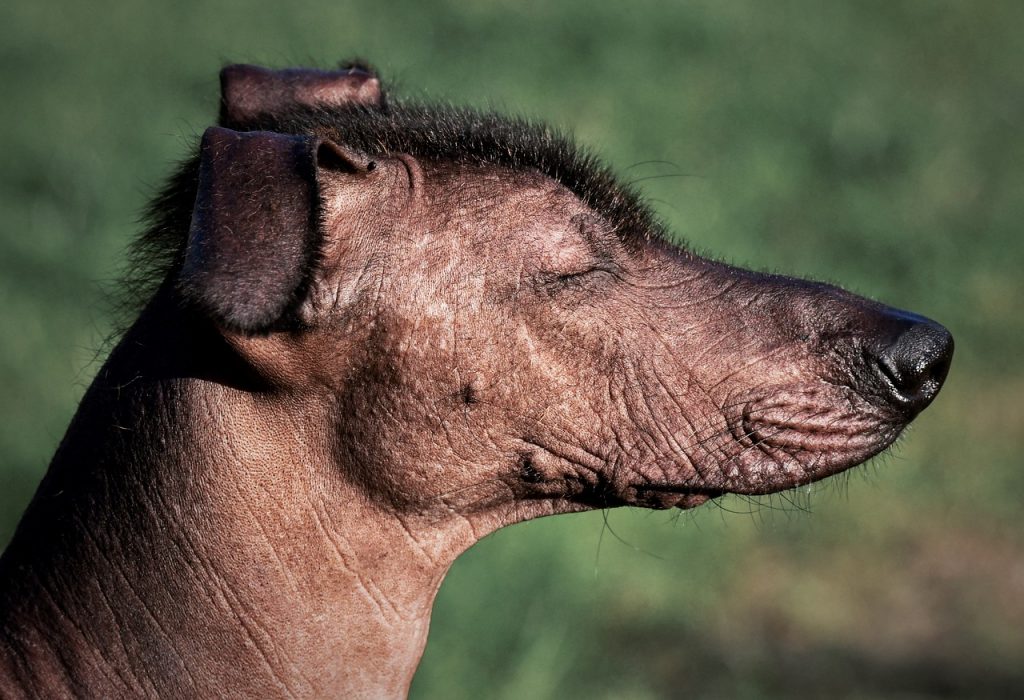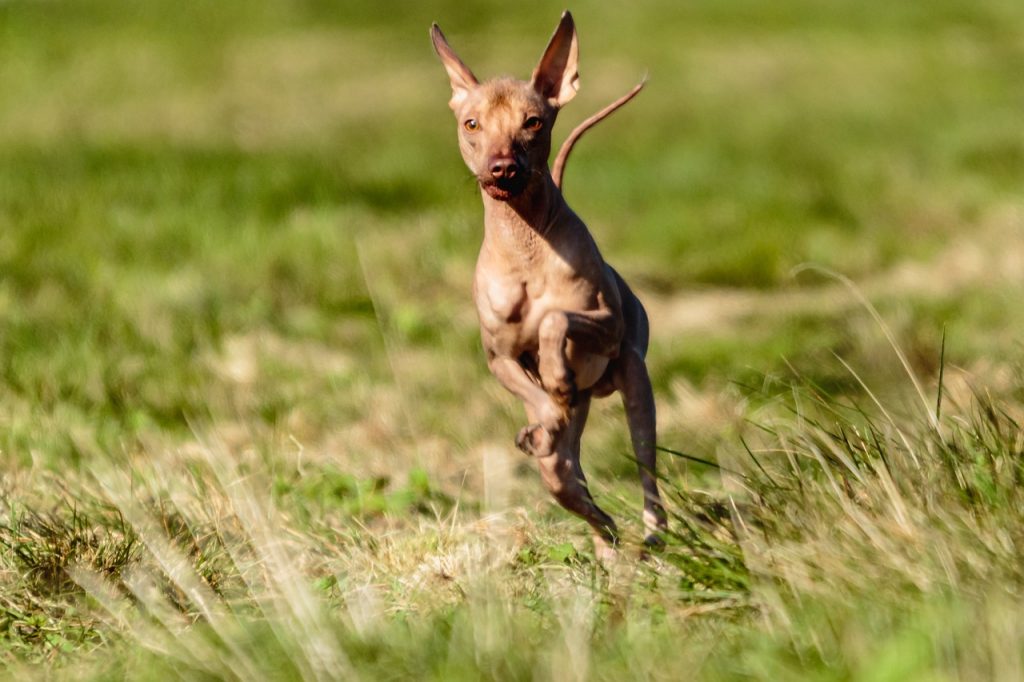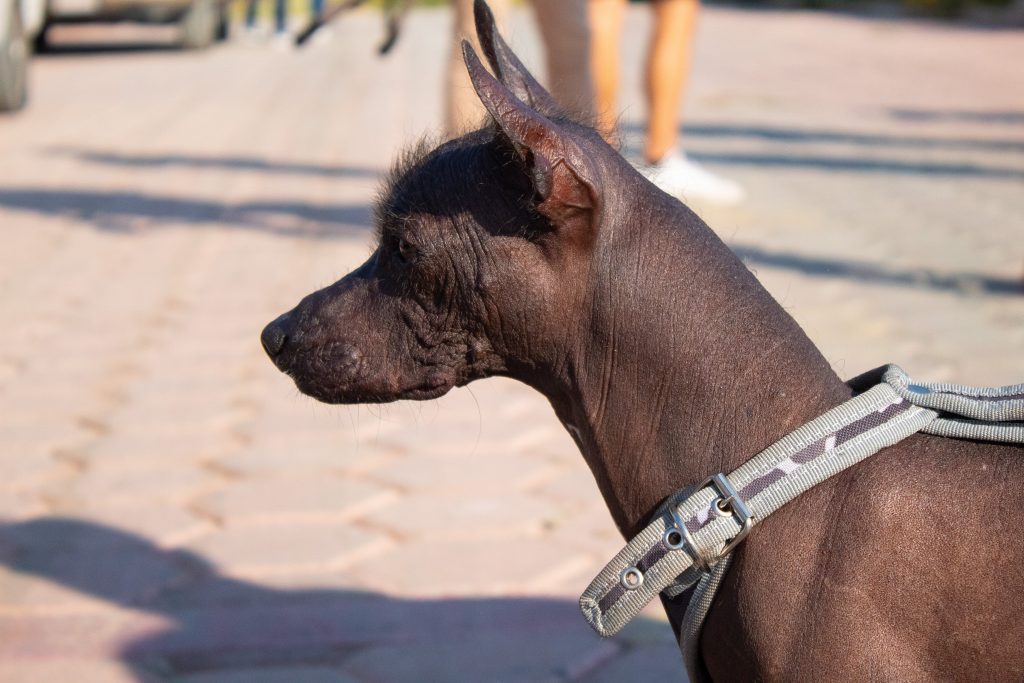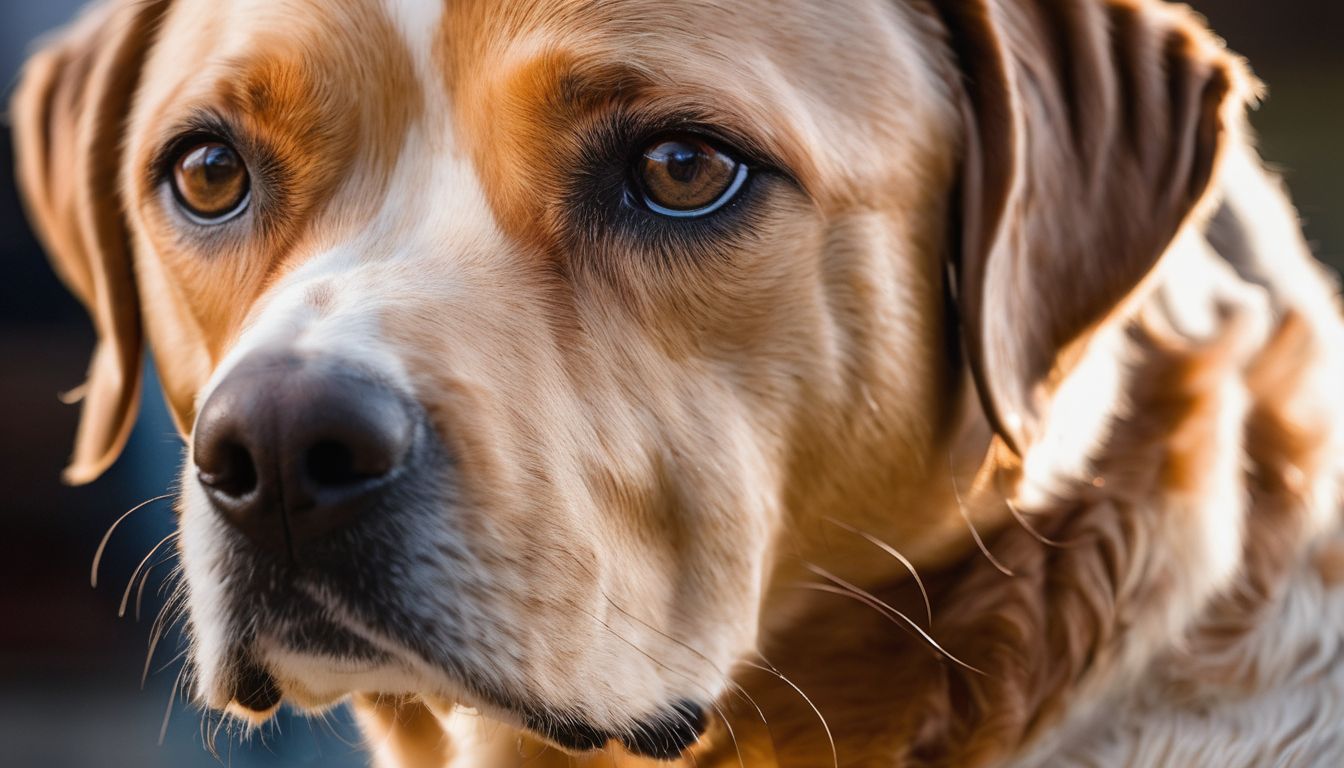Is your dog developing bald patches, causing you to worry? You’re not alone; this is a common issue many pet owners face. This blog will help you understand alopecia in dogs – the causes, symptoms, diagnosis and treatment options. Why is my dog getting bald patches?
Ready? Let’s find out more about these alarming signs for your furry friend!

Key Takeaways
- Bald patches on your dog could be a sign of alopecia, which refers to hair loss.
- Common causes of alopecia in dogs include allergies, genetics, infections, and trauma.
- To diagnose the cause of hair loss in dogs, veterinarians may use imaging tests like X – rays or ultrasounds, blood tests, and skin biopsies.
- Treatment and management options for alopecia in dogs include proper diet and nutrition, medication if necessary, supplements that promote hair growth, grooming and skincare practices, and seeking assistance from a veterinarian.
Understanding Dog Alopecia
Alopecia in dogs refers to hair loss, and it can be caused by a variety of factors such as genetics, acquired conditions, or trauma.
Definition of alopecia
Alopecia is the word used when a dog’s hair falls out. It can happen in patches on some parts of the body or all over. Different things can cause this like allergies, bugs, or sickness.
Sometimes it could also be due to the dog’s genes. Alopecia makes dogs uncomfortable because their skin gets dry and itchy, and they might feel pain too. Caring for a dog with alopecia involves finding out what causes it then treating that specific thing.
Common causes of hair loss in dogs
Hair loss in dogs can be caused by a variety of factors. Allergies, including food allergies or environmental allergies, are common culprits. Cushing’s disease, a hormonal disorder, can also cause hair loss in dogs.
Pressure sores from lying on hard surfaces for long periods of time can lead to bald spots. Additionally, genetics can play a role in dog hair loss, as certain breeds are more prone to alopecia than others.
Infections or infestations such as ringworm, bacterial infections, mites, or mange can also result in patches of hair loss on your dog’s coat. It is important to consult with your veterinarian to determine the exact cause and appropriate treatment for your furry friend.
Symptoms of alopecia in dogs
If your dog is experiencing alopecia, there are some common symptoms you can look out for. One sign is a brittle or dry coat, which may appear dull and lifeless. Another symptom is excessive shedding, where you notice an increased amount of hair loss when brushing or petting your dog.
Additionally, there may be crusting or inflammation around the areas where hair loss has occurred. These symptoms could indicate an underlying health issue that requires attention from a veterinarian.

Different Types of Alopecia in Dogs
There are three main types of alopecia in dogs: genetic alopecia, acquired alopecia, and trauma-related alopecia.
Genetic alopecia
Genetic alopecia refers to hair loss in dogs that is passed down through their genes. Some dog breeds are more prone to this condition, such as the Chinese Crested and the Dachshund.
If your dog has genetic alopecia, they may develop bald patches or have thinning hair in certain areas. It’s important to note that this type of hair loss cannot be prevented or reversed.
However, you can manage it by ensuring your dog has a healthy diet, keeping their skin clean and moisturized, and providing any necessary medications recommended by your vet. If you suspect genetic alopecia in your dog, consult with a veterinarian for proper diagnosis and guidance on how to best care for them.
Acquired alopecia
Acquired alopecia in dogs refers to hair loss that occurs as a result of an external cause or underlying illness. This type of alopecia can be caused by factors such as allergies, infections, hormonal imbalances, or certain medications.
For example, if your dog is constantly scratching or licking a specific area, it may lead to hair loss in that region. Other symptoms may include redness, inflammation, and crusting on the affected areas.
It’s important to consult with a veterinarian to determine the exact cause of acquired alopecia in order to provide appropriate treatment and management for your furry friend.
Trauma-related alopecia in dogs occurs when there is physical damage to the hair follicles, leading to bald spots. This can happen due to excessive licking, chewing, scratching, or rubbing of the affected area.
Trauma can result from environmental factors like rough play or accidents. Stress and anxiety can also contribute to this condition. It’s important for dog owners to address these underlying issues and prevent further trauma by using protective measures such as Elizabethan collars or calm-inducing techniques if needed.
Diagnosing Alopecia in Dogs
To diagnose alopecia in dogs, veterinarians may use imaging tests such as X-rays or ultrasounds, blood tests to check for underlying health issues, and skin biopsies to examine the affected area.
Other diagnostic methods may also be utilized. Curious about the treatment options? Keep reading!
Imaging tests
Imaging tests, such as X-rays and ultrasounds, can be helpful in diagnosing the cause of hair loss in dogs. These tests allow vets to see inside your dog’s body and check for any abnormalities or issues that may be affecting their coat.
For example, an X-ray can reveal if there are any underlying bone problems or tumors while an ultrasound can help identify issues with internal organs. By using these imaging tests, veterinarians can gather important information that will guide them in determining the best course of treatment for your dog’s bald patches.
Blood tests
Blood tests are an important diagnostic tool when it comes to figuring out the cause of hair loss in dogs. These tests can help identify any underlying health conditions that may be contributing to the bald patches on your dog’s coat.
By analyzing your dog’s blood sample, veterinarians can check for things like infection, hormonal imbalances, and vitamin deficiencies. The results of these tests will provide valuable information and guide the treatment plan for your furry friend.
So if you notice bald spots on your dog, don’t hesitate to consult a veterinarian who can recommend blood tests to determine the root cause of the hair loss.
Skin biopsies
To diagnose the cause of hair loss in dogs, veterinarians may use a diagnostic method called a skin biopsy. During a skin biopsy, a small sample of your dog’s skin is taken and examined under a microscope.
This allows the vet to determine if there are any underlying issues such as infection or inflammation that could be causing the bald patches on your dog’s coat. Skin biopsies can provide valuable information to help guide treatment and management options for your dog’s alopecia.
Other diagnostic methods
To diagnose alopecia in dogs, vets may also use other diagnostic methods. These include imaging tests like X-rays or ultrasounds to check for any abnormalities in the internal organs.
Blood tests can help identify underlying health conditions that may be causing hair loss. Skin biopsies involve taking a small sample of skin for examination under a microscope, which can help determine the cause of alopecia.
Other diagnostic methods might be used based on the specific symptoms and suspected causes of hair loss in your dog. It’s best to consult with a veterinarian to get an accurate diagnosis and appropriate treatment plan for your furry friend.

Treatment and Management of Alopecia
To treat and manage alopecia in dogs, it is important to focus on their diet and nutrition, provide medication if necessary, administer supplements that promote hair growth, maintain proper grooming and skincare practices, and seek assistance from a veterinarian for an accurate diagnosis and customized treatment plan.
Diet and nutrition
Proper diet and nutrition play a crucial role in maintaining a healthy coat for your dog. A balanced diet that is rich in essential nutrients, such as vitamins and minerals, can help prevent hair loss and promote healthy hair growth.
Make sure to provide your dog with high-quality commercial pet food or a homemade diet approved by a veterinarian. Omega-3 fatty acids found in fish oil can also be beneficial for their skin and coat health.
Additionally, consult with your vet about any specific dietary recommendations based on your dog’s age, breed, or underlying health conditions, as certain medical issues may require special dietary considerations.
Medication
If your dog is experiencing hair loss or bald patches, medication may be part of their treatment plan. Depending on the underlying cause of the hair loss, your veterinarian might prescribe medications to help manage the condition.
For example, if your dog has an infection or infestation that is causing the hair loss, they might need antibiotics or antiparasitic medication. In cases where hormonal imbalances are to blame, hormone therapy may be recommended.
It’s important to follow your vet’s instructions regarding medication dosage and administration to ensure it is effective in treating your dog’s alopecia.
Supplements
Supplements can be beneficial for dogs experiencing hair loss or bald spots. Certain supplements, like omega-3 fatty acids and biotin, can help improve the health of your dog’s coat and promote hair growth.
Omega-3 fatty acids are known for their anti-inflammatory properties, which can help reduce inflammation in the skin that may contribute to alopecia. Biotin is a B-vitamin that supports healthy skin and coat by improving the strength and thickness of the hair follicles.
However, it’s important to consult with your veterinarian before starting any supplements for your dog to ensure they are safe and appropriate for their specific needs.
Grooming and skin care
Grooming and skin care play a crucial role in managing hair loss in dogs. Regularly brushing your dog’s coat helps remove loose fur and stimulates blood flow to the hair follicles, promoting healthy regrowth.
Use a gentle shampoo formulated for dogs to keep their skin clean and prevent irritation. Avoid using harsh chemicals or human products on your dog’s skin, as they can cause further damage.
If you notice any signs of infection or inflammation, seek veterinary assistance immediately. Keeping your dog’s skin moisturized with appropriate creams or oils can also help improve their coat condition.
Seeking assistance from a veterinarian
If you notice bald patches on your dog or if they are losing hair excessively, it’s important to seek help from a veterinarian. They can help determine the underlying cause of the hair loss through various diagnostic methods like imaging tests, blood tests, and skin biopsies.
Consulting a vet is recommended because it can be difficult to identify the exact reason for the hair loss in dogs. The vet will provide specific treatment options tailored to your dog’s needs, which may include medication, dietary changes, or topical treatments.
Remember that seeking assistance from a veterinarian is crucial to addressing any health issues causing your dog’s bald patches.

Conclusion
If you notice your dog getting bald patches, it could be a sign of infection or disease. Common causes include allergies, genetics, and infections. It’s important to consult a vet to determine the exact cause and get the right treatment for your furry friend.
Pay attention to any unusual symptoms and take care of your dog’s skin health to prevent further hair loss.
FAQs
1. What are the alarming signs my dog may be getting bald patches?
If you see red patches on your dog’s skin, notice hair shedding in dogs excessively or they have a brittle coat, these could be signs of dog bald spots.
2. Why might my dog have hair loss?
Dog hair loss causes can range from simple things like seasonal shedding to more serious issues like disease in dogs such as canine alopecia (dog balding).
3. Are there other symptoms I should look out for along with bald spots on dogs?
Yes! Along with noticing thin hair in dogs and excess shedding, symptoms of dog dermatitis also include crusting and inflammation in dogs’ skin.
4. Could there be external sources causing my dog’s skin problems?
Absolutely! Your pet may get exposed to mites or allergens that cause infections leading to skin problems and result in more visible signs like red patches on the skin and excess shedding.
5. How do I find out what’s causing my Dog’s Hair Thinning & Bald Patches?
See if your pet shows any symptoms of being ill then take them to vet for a check-up.They can identify if its due bacterial infection,dog allergies or other diseases which results in fur thinning.


